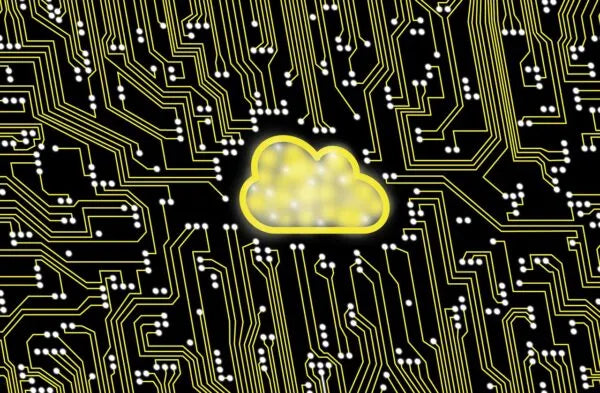
Ihren digitalen Raum aufräumen: Einfache Schritte zur Reduzierung von digitalem Abfall
Aktie
Geht Ihnen manchmal der Speicherplatz auf Ihrem Telefon oder Computer aus, weil Sie zu viele Fotos, Videos und Dokumente haben? Oder quillt Ihr E-Mail-Postfach über vor Werbemails, die Sie nie lesen werden? Das kennen wir alle!
Aber wussten Sie, dass dieses digitale Durcheinander einer Art Müll ähnelt, der als „digitaler Abfall“ bezeichnet wird?
Digitaler Müll ist einfach gesagt all der nutzlose Kram wie alte Bilder, überflüssige Dateien und unerwünschte E-Mails, der sich auf unseren Geräten und im Internet ansammelt. Anders als beim normalen Müll, den wir wegwerfen, vergessen wir dieses digitale Chaos oft, und es wächst immer weiter!
Heutzutage können wir eine Menge Zeug in der Cloud speichern, was super einfach und günstig ist. Aber es stellt sich heraus, dass es auch eine kleine Kehrseite hat – es ist nicht immer nur eitel Sonnenschein. Das Speichern von Daten verursacht tatsächlich CO2-Kosten, wie eine versteckte Umweltgebühr.
Lassen Sie uns das Problem des digitalen Chaos aufschlüsseln
Und das Überraschende daran: Dieser digitale Müll ist nicht nur ärgerlich, er ist auch schädlich für die Umwelt. Er erhöht den Kohlendioxidausstoß und trägt zur globalen Erwärmung bei.
100 unnötige E-Mails können laut Experten so viel Umweltverschmutzung verursachen wie 125 Glühbirnen. Accenture
Digitaler Abfall ist im Grunde der CO2-Fußabdruck einer nicht besonders intelligenten Datenspeicherung. Es ist wie ein unordentliches Zimmer, nur in der digitalen Welt. Dazu gehören alle Arten schlecht verwalteter Daten – Dinge, die einfach nur herumliegen und Platz wegnehmen, ungenutzt, redundant oder einfach falsch sind, weil jemand einen Fehler gemacht hat.
Nun zum Energieaspekt: Das Speichern von Daten benötigt Strom, und zwar nicht gerade wenig. Stellen Sie sich vor, Sie speichern 100 Gigabyte Daten in der Cloud – das ist so, als würden Sie eine Menge Fotos und Videos posten. Das summiert sich auf rund 0,2 Tonnen Kohlendioxid pro Jahr. Das ist zwar nicht so viel wie der Ausstoß eines Autos, aber für große Unternehmen, die mit riesigen Datenmengen umgehen, macht sich das bemerkbar.
Im Jahr 2016 speicherte ein durchschnittliches Unternehmen satte 347,56 Terabyte an Daten. Wenn sie all diese Daten behalten würden, wäre das, als würden sie jedes Jahr fast 700 Tonnen Kohlendioxid in die Luft freisetzen. Das ist viel, oder?
Und wenn wir schon von großen Zahlen sprechen: Im Jahr 2023 haben wir 120 Zettabyte an Daten generiert, das sind: 10 21 (1.000.000.000.000.000.000.000) Bytes. Ich kenne Sie nicht, aber ich habe Schwierigkeiten, aus so vielen Nullen einen Sinn zu machen!
Obwohl Cloud-Speicher super praktisch ist, müssen wir uns darüber im Klaren sein, dass es dabei nicht nur um Bequemlichkeit geht – es geht auch um CO2-Kosten. Versuchen wir, unsere digitalen Räume sauber und ordentlich zu halten, um dem Planeten ein wenig zu helfen. Was denken Sie darüber?
Wie werden Daten zu digitalem Müll?

Zum Speichern von Daten, insbesondere von großen Datenmengen, sind enorme Speichergeräte erforderlich. Diese physischen Geräte laufen meist rund um die Uhr, was wiederum noch mehr Strom für alle Hardware- und Supportkomponenten erfordert, die zum Verhindern eines Systemausfalls erforderlich sind, wie z. B. Kühlventilatoren und Feuerlöschsysteme.
Mehr Daten bedeuten mehr Speichergeräte und Unterstützungssysteme. Mehr Geräte bedeuten mehr Strombedarf und Stromverbrauch. Diese wiederum erzeugen Kohlenstoffemissionen, die zur globalen Erwärmung, zum Klimawandel und zur Gesundheit des Planeten beitragen.
Wie können Sie als Einzelner dazu beitragen, Datenverschwendung zu bekämpfen?
Natürlich sind es große Unternehmen und Netzwerke, die am meisten zum Digitalmüll beitragen, aber wir können unsere Verantwortung nicht ignorieren, denn die kumulative Wirkung dessen, was jeder von uns tut, ist ebenfalls sehr bedeutsam.
Die gute Nachricht ist, dass es viele kleine Dinge gibt, die Sie tun können, um Ihr eigenes digitales Chaos zu reduzieren und Ihren digitalen Raum sauber und übersichtlich zu halten. Sehen Sie sich unsere Vorschläge unten an:
- Leeren Sie regelmäßig den Papierkorb Ihres Online-Postfachs und Ihrer Galerie. Löschen Sie außerdem Spam, Werbe-E-Mails und Nachrichten, die Sie nicht regelmäßig benötigen. Sie können sich selbst einige Kalendererinnerungen einrichten, um dies in regelmäßigen Abständen zu tun. Genau das tun wir als Team bei Green Cloud Nine . Es wird berechnet, dass ein Newsletter etwa 10 g Kohlendioxid ausstößt!
- Überprüfen Sie regelmäßig Ihre Dateien und Ordner im Cloud-Speicher und auf persönlichen Laufwerken und löschen Sie alles, was Sie nicht mehr benötigen, um Speicherplatz freizugeben.
- Überprüfen Sie Ihre Social-Media-Konten, um zu sehen, ob Sie etwas löschen können. Begrenzen Sie außerdem die Zeit, die Sie mit digitalen Geräten und Social Media verbringen.
- Entfernen Sie Anwendungen von Ihren Geräten und schließen Sie Browserfenster, wenn Sie sie nicht verwenden.
- Wählen Sie den Dunkelmodus und reduzieren Sie die Helligkeit, mit der Sie Ihre Geräte verwenden. Dadurch können Sie Ihren Stromverbrauch, den CO2-Ausstoß und auch Ihre Rechnungen deutlich senken.
- Üben Sie, Ihre Geräte auszuschalten und vom Strom zu trennen, wenn Sie mit der Arbeit fertig sind. Sie wissen ja, dass auch sie eine Pause brauchen!
- Vermeiden Sie auf Ihren Geräten möglichst die Verwendung von Bildschirmschonern. Schalten Sie stattdessen die Bildschirme aus.
- Ändern Sie Ihre Einstellungen, um den Ruhemodus nach kurzer Inaktivität zu aktivieren.
- Verwenden Sie ein WLAN-Netzwerk anstelle von Mobilfunkdaten, um den CO2-Ausstoß zu reduzieren. Die neueste Technologie benötigt die geringste Menge an Energie.
- Deaktivieren Sie Verbindungsoptionen wie Bluetooth und Airdrop, wenn sie nicht benötigt werden.
- Nutzen Sie eine Digital-Detox- oder Digital -Cleaning-Anwendung, wenn Sie es alleine nicht schaffen.
- Achten Sie bei der Auswahl von Cloud-Anwendungen auf solche, die ihre CO2-Emissionen bereits verwalten und kompensieren.
Was passiert, wenn wir keinen verantwortungsvollen Umgang mit unseren Daten übernehmen?

Der Trend zur Digitalisierung von Dokumenten, zur Nutzung künstlicher Intelligenz und zur Fernarbeit nimmt weiter zu. Wenn wir unser Verhalten nicht ändern, prognostizieren Experten, dass die durch diese Aktivitäten verursachten Kohlendioxidemissionen möglicherweise einen Rebound-Effekt auslösen könnten.
Theoretisch könnte sich die digitale Nutzung positiv auf die CO2-Emissionen auswirken, da sie weniger Reisen erfordert und die Infrastruktur am Arbeitsplatz weniger Energie verbraucht. Tatsächlich wird jedoch erwartet, dass der digitale Energieverbrauch und die CO2-Emissionen angesichts der steigenden Geschwindigkeit der digitalen Nutzung gleich oder sogar höher sein werden als zu der Zeit, als wir jeden Tag zur Arbeit gehen mussten.
Wir geben Ihnen also diesen Denkanstoß und hoffen, dass Ihnen unsere Vorschläge gefallen. Schreiben Sie einen Kommentar, wenn Sie sie nützlich fanden.




